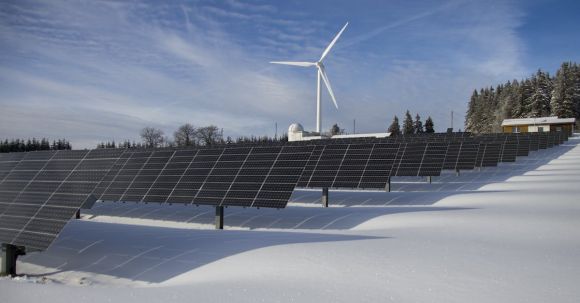As the world continues to grapple with the effects of climate change and the depletion of fossil fuels, the search for alternative energy sources has become more urgent than ever. The need for clean and sustainable energy solutions has led to the exploration and development of various alternative energy sources that have the potential to power our future. In this article, we will explore some of these alternative energy sources and their role in creating a sustainable future.
Solar Power: Harnessing the Power of the Sun
One of the most promising alternative energy sources is solar power. Solar energy is the conversion of sunlight into electrical energy using photovoltaic cells. This renewable energy source has enormous potential as the sun provides an abundant and free source of energy. Solar panels can be installed on rooftops or in large solar farms to generate electricity. In addition to being a clean and sustainable source of energy, solar power also reduces the carbon footprint and dependence on fossil fuels.
Wind Power: Tapping into the Power of the Wind
Another alternative energy source that has gained significant traction is wind power. Wind turbines harness the power of the wind to generate electricity. As the wind blows, it spins the turbine blades, which in turn rotate a generator to produce electricity. Wind power is a clean and renewable energy source that has the potential to generate large amounts of electricity. It is also a cost-effective solution in areas with high wind speeds, such as coastal regions and open plains.
Hydropower: Utilizing the Power of Water
Hydropower is another alternative energy source that has been utilized for centuries. It involves the use of flowing or falling water to generate electricity. Hydropower plants convert the kinetic energy of water into electrical energy through turbines and generators. This renewable energy source is not only clean and sustainable but also highly efficient, capable of generating large amounts of electricity. Hydropower plants can be built on rivers, streams, and even in oceans, making it a versatile energy source.
Geothermal Energy: Harnessing the Heat from the Earth
Geothermal energy is derived from the heat stored within the Earth. This renewable energy source is harnessed through geothermal power plants that tap into hot water or steam reservoirs beneath the Earth’s surface. The heat is then converted into electricity using turbines and generators. Geothermal energy is a reliable and continuous source of power, as the Earth’s heat is virtually inexhaustible. It is also a clean and sustainable energy source that produces minimal greenhouse gas emissions.
Bioenergy: Tapping into Organic Matter
Bioenergy is derived from organic matter, such as plants, agricultural waste, and even animal waste. This renewable energy source can be converted into various forms of energy, including heat, electricity, and biofuels. Bioenergy can be produced through processes like combustion, gasification, and fermentation. It is a versatile alternative energy source that can be used in various sectors, including transportation, heating, and electricity generation. By utilizing organic waste materials, bioenergy helps reduce landfill waste and greenhouse gas emissions.
Conclusion: A Sustainable Future Powered by Alternative Energy Sources
As we strive towards a sustainable future, alternative energy sources have emerged as viable solutions to our energy needs. Solar power, wind power, hydropower, geothermal energy, and bioenergy offer clean, renewable, and sustainable options for powering our homes, businesses, and transportation systems. By embracing these alternative energy sources, we can reduce our carbon footprint, mitigate the effects of climate change, and secure a brighter and more sustainable future for generations to come. It is time to harness the power of innovation and embrace alternative energy sources as the key to a sustainable future.





